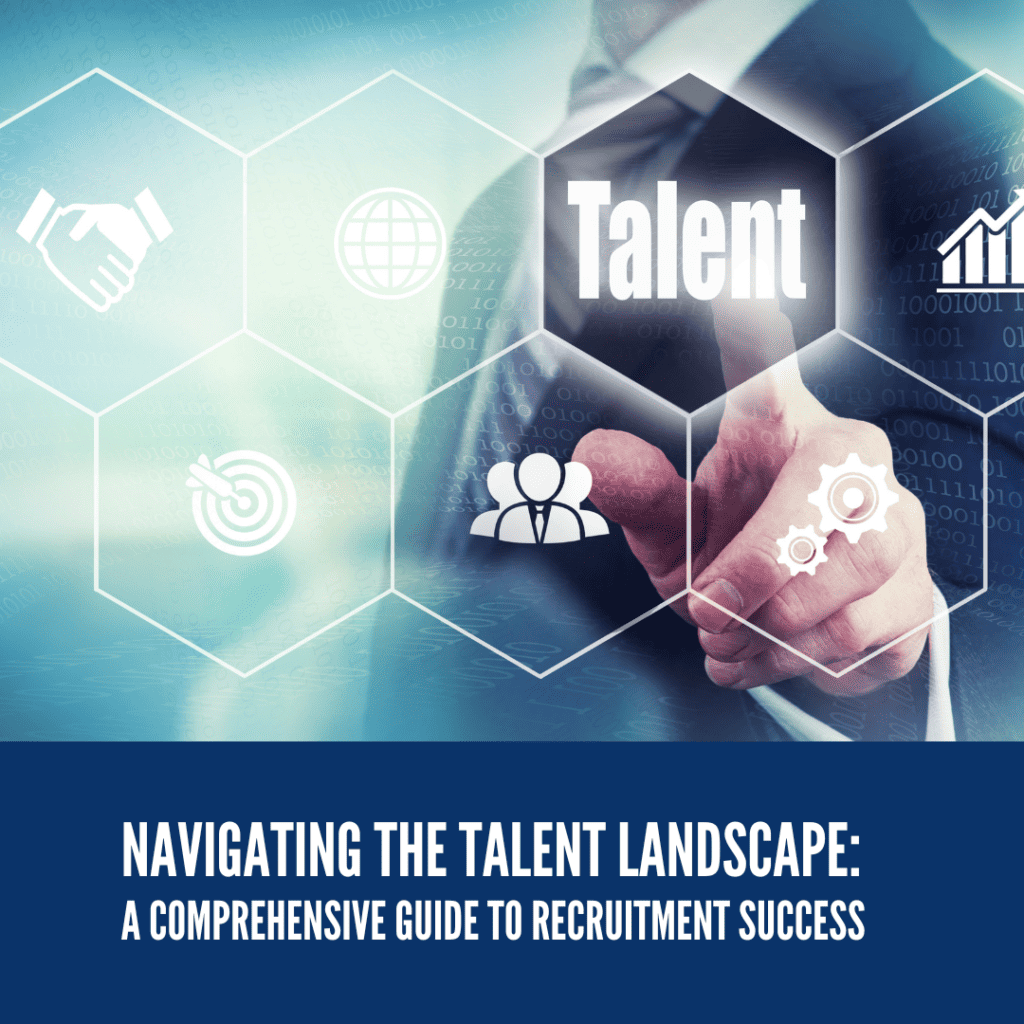
In the ever-evolving world of business, one of the key factors that can make or break an organization is its talent pool. As businesses strive to stay competitive in today’s dynamic environment, navigating the talent landscape has become a critical aspect of strategic planning. This blog explores the intricacies of the recruitment journey, shedding light on the key stages and considerations that organizations and candidates alike must navigate.
The Evolving Landscape
The talent landscape is not static; it evolves in tandem with societal, technological, and economic changes. In recent years, the digital revolution has transformed the way companies approach recruitment. Online platforms, artificial intelligence, and data analytics have become integral tools in identifying, attracting, and retaining top talent.
For organizations, understanding this shifting landscape is essential. Traditional recruitment methods are no longer sufficient to meet the demands of a rapidly changing business environment. Embracing technology and adopting innovative approaches are crucial steps in navigating the contemporary talent landscape.
The Recruitment Journey Unveiled
1. Strategic Workforce Planning
Before embarking on the recruitment journey, organizations need to engage in strategic workforce planning. This involves aligning business goals with the skills and talents required to achieve them. It’s about forecasting the organization’s future talent needs, identifying skill gaps, and developing strategies to fill those gaps.
Strategic workforce planning sets the stage for effective recruitment by providing a roadmap for talent acquisition. It ensures that the right people are in the right roles at the right time, contributing to the overall success of the organization.
2. Crafting Compelling Job Descriptions
A well-crafted job description is the first point of contact between an organization and potential candidates. It serves as a marketing tool that not only outlines the responsibilities and qualifications required for the role but also reflects the company’s culture and values.
In today’s competitive job market, organizations must go beyond listing qualifications and responsibilities. They need to articulate what makes their workplace unique, why candidates should be excited to work there, and how the role aligns with their career goals. A compelling job description is a key factor in attracting top talent.
3. Leveraging Technology in Recruitment
Technology has revolutionized the recruitment process, making it more efficient and data-driven. Applicant Tracking Systems (ATS), for example, help streamline the screening and selection process by automating the handling of resumes and applications.
In addition to ATS, organizations are increasingly using virtual hiring events and artificial intelligence (AI) to identify and assess potential candidates. Virtual hiring events allow organizations to meet, interview, and evaluate potential candidates immediately in real time, and streamline the recruitment process. AI algorithms can analyze resumes, predict candidate success, and even conduct initial interviews. While technology can enhance efficiency, it’s crucial to strike a balance and ensure that the human touch is not lost in the process.
4. Building a Strong Employer Brand
In a world where candidates have access to a wealth of information about potential employers, building a strong employer brand is paramount. Employer branding goes beyond marketing; it’s about creating a positive and authentic perception of the organization as an employer.
Candidates are not only evaluating the job role but also considering the company’s values, work culture, and reputation. Organizations that invest in building a positive employer brand are more likely to attract top talent and retain employees in the long run.
5. The Art of Interviewing
The interview stage is a crucial step in the recruitment journey. It’s an opportunity for both the organization and the candidate to assess if there’s a mutual fit. Effective interviewing goes beyond asking standard questions; it involves assessing a candidate’s skills, cultural fit, and potential for growth.
Behavioral interviews, case studies, and skills assessments are becoming common tools in the interview process. They provide a more holistic view of a candidate’s abilities and help in making informed hiring decisions. Additionally, providing a positive candidate experience during the interview process contributes to a favorable employer brand.
6. Onboarding and Integration
Once a candidate is successfully recruited, the journey doesn’t end there. Onboarding plays a crucial role in ensuring a smooth transition for new hires. It’s an opportunity to introduce them to the company culture, values, and expectations.
Effective onboarding goes beyond paperwork; it involves integrating new employees into the team and providing the necessary support for them to thrive in their roles. A positive onboarding experience sets the tone for the employee’s tenure and contributes to long-term retention.
Challenges and Solutions
While the recruitment journey is essential, it’s not without its challenges. From the talent shortage to the impact of global events, organizations must navigate obstacles to secure the best talent. Remote work trends and the gig economy have also introduced new dynamics to the talent landscape.
Addressing these challenges requires a proactive approach. Continuous learning and development programs can help organizations upskill their existing workforce, mitigating the effects of skill shortages. Embracing diversity and inclusion initiatives is another key aspect, fostering an inclusive workplace that attracts a diverse range of talents.
Conclusion
Navigating the talent landscape is a multifaceted journey that involves strategic planning, leveraging technology, and prioritizing the candidate experience. In an era where talent is a critical differentiator, organizations must adapt and evolve their recruitment strategies to stay ahead.
For candidates, understanding the recruitment journey provides insights into what organizations value and seek in potential hires. It’s a process that goes beyond submitting a resume; it’s about finding the right fit for both the individual and the organization.
As the talent landscape continues to evolve, organizations that embrace innovation, foster a positive employer brand, and prioritize the development of their workforce will position themselves for success in attracting and retaining top talent. The recruitment journey is a collaborative effort between organizations and candidates, with each playing a crucial role in shaping the future of work.
